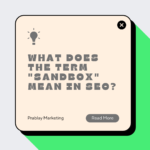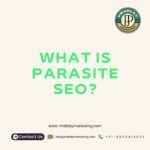In the bustling world of digital marketing, standing out is more crucial than ever. With millions of websites vying for attention, how can your content rise above the noise? Enter SEO-rich text. This powerful tool not only enhances user experience but also boosts your visibility on search engines. If you’ve ever wondered what makes some search results more appealing than others, you’re in the right place. Let’s dive into the fascinating realm of SEO-rich text and uncover its secrets to driving traffic and engagement like never before.
Understanding SEO-Rich Text
SEO-rich text is more than just a collection of keywords. It’s about enhancing content to make it both informative and engaging for readers while also catering to search engine algorithms.
Structured data plays a key role in this process. By using specific markup, webmasters can provide search engines with additional context about their content. This allows search engines to display rich snippets that stand out on results pages.
Rich snippets often include images, star ratings, or other visual elements that draw users’ attention. They not only improve click-through rates but also help convey important information at a glance.
Understanding SEO-rich text involves recognizing its dual purpose: appealing to human readers and satisfying the technical requirements set by search engines. Balancing these aspects is essential for effective online visibility and engagement.
Types of SEO-rich text
SEO-rich text comes in various forms, each designed to enhance visibility and engagement.
Structured data is one of the most common types. It uses schema markup to help search engines understand your content better. This leads to rich snippets that stand out on search results pages.
Another type is FAQ sections. They address specific queries directly within the page, allowing for featured snippets that can attract clicks.
Product listings also fall under this category, showcasing essential information like prices and reviews. When optimized correctly, these can yield rich results that capture user interest effectively.
Blog posts with embedded videos or infographics are yet another form of SEO-rich text. They not only enrich the content but also improve dwell time on your site.
All these types work together to offer a more engaging experience while boosting organic searches through well-structured elements.
How Does SEO Rich Text Work?
SEO-rich text works by utilizing structured data to enhance the visibility of your content on search engines. This involves embedding specific tags and formats within your website’s code, which helps search engines understand the context of your information.
When you implement rich snippets, you provide additional details about your content. These can include ratings, price ranges, or event dates that make it more attractive in search results.
Search engines like Google parse this structured data to present enhanced listings known as rich results. As a result, these listings stand out from traditional ones by offering users immediate value right from the search page.
By integrating SEO-rich text effectively, you boost your chances of achieving higher click-through rates while improving user engagement with informative previews.
Benefits of using SEO-Rich Text
Using SEO-rich text can significantly enhance your content’s visibility. It helps search engines understand the context and relevance of your information, leading to improved rankings.
Rich snippets grab user attention in search results. They provide additional details like ratings or images that stand out from standard listings. This increased visibility often translates to higher click-through rates.
Moreover, SEO-rich text enhances user experience. When structured data is properly implemented, it delivers precise information quickly. This efficiency keeps visitors engaged and encourages them to explore more of your site.
Additionally, leveraging rich results can lead to better engagement on social media platforms as well. Eye-catching visuals paired with concise data entice users to share content across their networks.
Implementing SEO-rich text fosters trust between you and your audience too. When users find accurate info effortlessly, they’re more likely to view you as an authority in your field.
How to implement SEO-Rich Text Snippets?
To implement SEO-rich text snippets effectively, start with structured data markup. This involves adding specific code to your HTML that helps search engines understand the content on your page better. You can use schema.org vocabulary to define types of rich snippets—whether you’re showcasing products, recipes, events, or reviews.
Ensure your title tag is compelling and accurately summarizes what users will find on the page. A well-crafted title tag not only attracts clicks but also plays a crucial role in SEO-rich text presentation.
Next, focus on high-quality content that answers user queries directly. The more informative and relevant your information is, the higher the chances are for it to be featured as a rich result in search engine results pages (SERPs).
Testing is vital after implementation. Use tools like Google’s Rich Results Test to check if you’ve set everything up correctly. Monitoring performance through Google Search Console will help you track how often these rich snippets appear and their impact on click-through rates.
By consistently refining your approach based on analytics and user feedback, you’ll enhance both visibility and engagement over time with SEO-rich texts.




